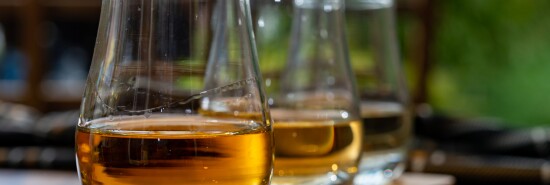
From Teddy Roosevelt whiskey to Minnesota bourbon
Eric Felten
Teddy Roosevelt was not one to be entirely trusted on the subject of alcohol. In the 1912 presidential contest, T.R.’s opponents spread the word he was a lush. In particular, a small newspaper in Michigan declared he was a notorious drunk. Outraged, the old Bull Moose swore that after the election, he would sue the local rag for libel.
On that, he was as good as his word. In 1913, Roosevelt and a small army of politicos, journalists, and random witnesses boarded a train for Marquette, Michigan, where there was to be a libel trial. If you’ve ever seen Anatomy of a Murder, you’ve seen the Marquette County Courthouse. The movie was largely filmed in that stately structure.
THINK YOU KNOW YOUR GIBSONS FROM YOUR SIDECARS? THE DOWNTIME COCKTAIL QUIZ
Roosevelt took the stand and delivered testimony that left little wiggle room: “I have never been drunk or in the slightest degree under the influence of liquor.” Roosevelt proclaimed, “I have never drunk a cocktail or a highball in my life. With the exceptions hereafter noted, I never drank whiskey or brandy, except under the advice of a physician. I don’t care for the taste of either. I never have drunk beer, nor do I drink red wine. The only wines I have drunk have been white wines, Madeira, champagne or very occasionally, a glass of sherry.” Mint juleps were right out.
Roosevelt prevailed, but no one took it particularly seriously, least of whom the judge, who awarded the former president 6 cents in damages.
Perhaps he knew that when it came to abstemiousness, Teddy was fibbing. Consider the White House whiskey tasting of 1907. It was the age of the Pure Food and Drug Act, and whiskey was one of the first targets of reformers out to eliminate phony liquor — rectified whiskey was basically moonshine doctored with chemicals and flavoring, concocted to imitate honest likker.
Dr. Harvey Wiley, chief of the Bureau of Chemistry at the Department of Agriculture, was an advocate for honest labeling. “Tell the truth on the label,” was his motto, “and let the consumer judge for himself.” When it came to flavored and blended whiskey-like spirits, Wiley wanted to see labels that read “imitation whiskey.” The rectifiers were naturally opposed.
Wiley didn’t waste time skirmishing with the rectifiers. He went straight to the top, giving Teddy Roosevelt a visit at the White House late on a November evening in 1907. Wiley brought with him samples of proper straight whiskey as well as neutral spirits together with various chemicals that could be combined to imitate the real thing. It was all very scientific, with beakers and test tubes. After two hours of sampling Wiley’s wares, Roosevelt declared he couldn’t tell the difference between straight whiskey and the rectified sort.
Never mind that T.R. couldn’t tell the difference between compound booze and the good stuff. My point is that Roosevelt was able to drink whiskey for two hours without falling out of his chair. A remarkable feat for one who claimed under oath that he found whiskey to be so nasty that he never had a drop.
Bourbon was eventually defined. It has to be made from a grain mash of at least 51% corn. To be called “straight bourbon,” the whiskey has to be aged in charred new oak barrels for at least two years. There are technical requirements about the proof at which the spirit can come off the still and be bottled. And of course, it has to be made in Kentucky. …Not! Bourbon can be made anywhere in the United States. That includes such northerly climes as Minnesota, which, over the last decade, has flourished in making bourbon.
I recently blind-tasted several Minnesota bourbons and found them to be surprisingly good. GEO Benz & Sons is a perfect cocktail whiskey, substantial without being harsh. Tattersall makes both a “high rye” bourbon and a “wheated” version. Both were first-rate, and the expression with the high proportion of wheat in the mash may have been my favorite. It faced stiff competition from a whiskey from the Far North Spirits distillery called Bodalen. It’s brilliant farm-to-bar-table stuff, with a farmer-distiller who grows the grain he uses to distill. I wouldn’t be surprised if, before long, Minnesota bourbon becomes hard to get. Get some before the cognoscenti drink the barrels empty.
CLICK HERE TO READ MORE FROM THE WASHINGTON EXAMINER
Eric Felten is the James Beard Award-winning author of How’s Your Drink?
